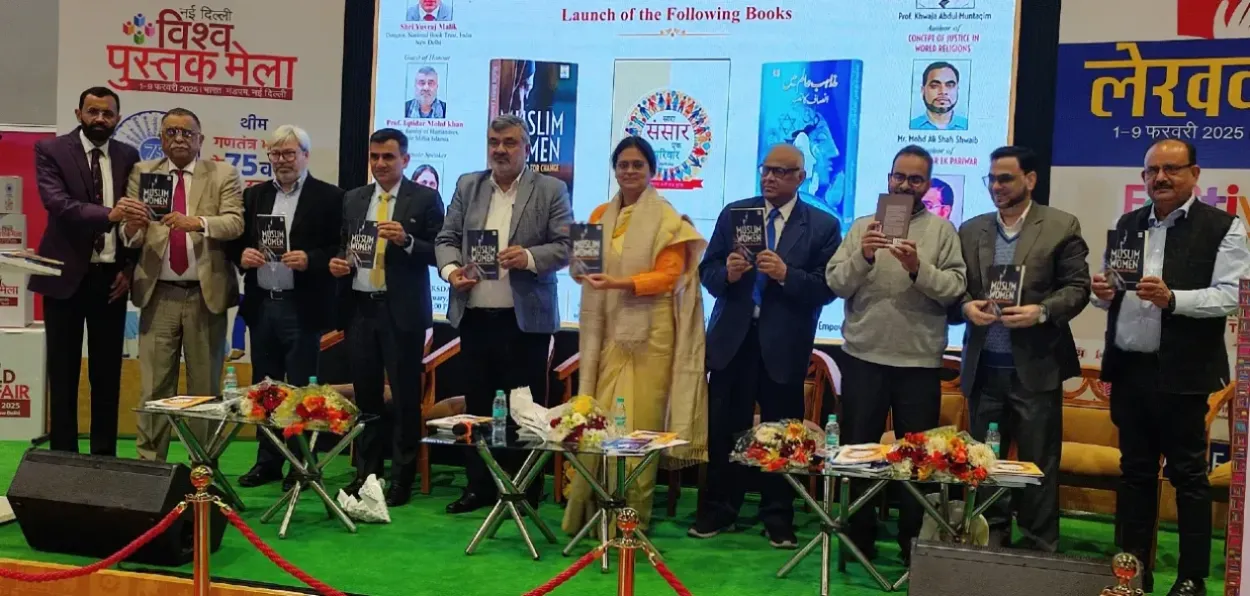
Dr. Ruchika Arora
Muslim Women: A Manifesto for Change by Dr. Muhammed Maroof Shah is an insightful book that examines the challenges faced by Muslim women in India and offers practical solutions grounded in both religious teachings and social progress. The author balances tradition with progress, advocating for a model of empowerment that remains deeply rooted in Islamic values while promoting justice and gender equality, making this work a crucial addition to discussions on women's rights in Muslim communities.
The book is divided into eight chapters, each addressing key issues that affect Muslim women. Rather than simply identifying problems, Shah provides practical solutions based on religious principles, ethics, and social policies. He touches on struggles like limited access to education, financial dependence, domestic challenges, and restrictions on movement. The book encourages both religious scholars and modern thinkers to engage in discussions rather than opposing each other and encourages communities to work together toward progress.
The author raises an important question—should discussions focus on rights or duties? He argues that understanding and fulfilling duties naturally lead to the realization of rights. His approach promotes fairness, where women can participate in society while respecting cultural and religious values.
Maroof Shah deeply engages with Islamic teachings to show how religion can be used to empower rather than limit women. He argues that many restrictions placed on women stem from cultural traditions rather than religious doctrine. His proposed roadmap for change includes the establishment of Women’s Welfare Funds, increased access to quality education, and a cultural shift towards recognizing women's contributions beyond traditional roles.
The book also explores the financial burdens linked to marriage. Shah criticizes extravagant wedding traditions that place unnecessary pressure on women and their families. He suggests reforms to the Nikah Nama (marriage contract) to better protect women’s rights and encourage simpler and more affordable wedding customs. By reducing financial burdens in marriage and ensuring fairer agreements, women can become more stable and independent. Furthermore, he highlights how financial problems often limit women's freedom to make choices and advocates for legal frameworks that allow control over finances and assets.
Another significant aspect of Shah’s book is his discussion of women's well-being beyond legal and social rights. He talks about mental health, emotional support, and strong family relationships that help rather than confine women. Many struggles come from rigid social expectations, and the author calls for a shift in these norms to create healthier and more supportive communities.
He also urges religious institutions to play an active role in advocating for women's rights, suggesting that mosques and Islamic schools can become platforms for educating people about gender justice, domestic violence, and financial independence. He further emphasizes the importance of media representation, encouraging more stories of empowered Muslim women to be highlighted in literature, film, and TV.
One of the greatest strengths of Muslim Women: A Manifesto for Change is its balanced perspective. The author finds a middle ground that resonates with a broad audience, acknowledging feminist concerns while reaffirming religious and ethical values, making the book relevant to scholars, activists, and policymakers. A recurring theme throughout the book is the importance of open dialogue—between men and women, religious scholars and reformers, and between tradition and modernity.
Shah emphasizes that meaningful progress comes from discussion rather than ideological confrontations. The book does not remain purely theoretical but offers practical steps to improve the condition of Muslim women, such as marriage reforms, financial education, and community welfare programs. Moreover, he provides examples from Islamic history where women played key roles in scholarship, leadership, and business, demonstrating that Islam encourages women's participation in all areas of life.
The Book makes a significant contribution to the discourse on women’s rights in Muslim societies. By advocating for reform while staying grounded in religious and ethical values, Shah presents a compelling vision for progress. His emphasis on dialogue, action, and ethical responsibility makes this book an essential read for anyone interested in gender justice within an Islamic framework.
It encourages constructive discussions and practical reforms, offering hope for a more inclusive and rightful future for Muslim women. This book is highly recommended for academics, policymakers, social reformers, and Muslim communities seeking a balanced perspective on women's empowerment.
The Khusro Foundation is a widely recognized organization in India and beyond, dedicated to fostering peace, harmony, and unity through literature and education. It has established a strong reputation for its efforts in promoting cultural understanding and truthful information about Islam. A major initiative of the foundation is the publication of high-quality literature in Urdu, Hindi, and English, to inspire, integrate, and unite the people of India.
It actively works to promote communal harmony, tolerance, and understanding among individuals from diverse faiths, religious practices, and cultural backgrounds. It is committed to generating and disseminating accurate information about Islam to counter misconceptions and misinformed narratives. By fostering dialogue and intellectual engagement, it strives to build a more inclusive and informed society.
ALSO READ: ISRO scientist Sabir Alam of Chandrayan-3 fame feels he has miles to go
The printing quality of the book is excellent, with a well-designed layout, clear typography, and high-quality paper. The attention to detail complements the depth and importance of the content, enhancing the reading experience.
The author is a former research fellow with INTACH and CCRT
